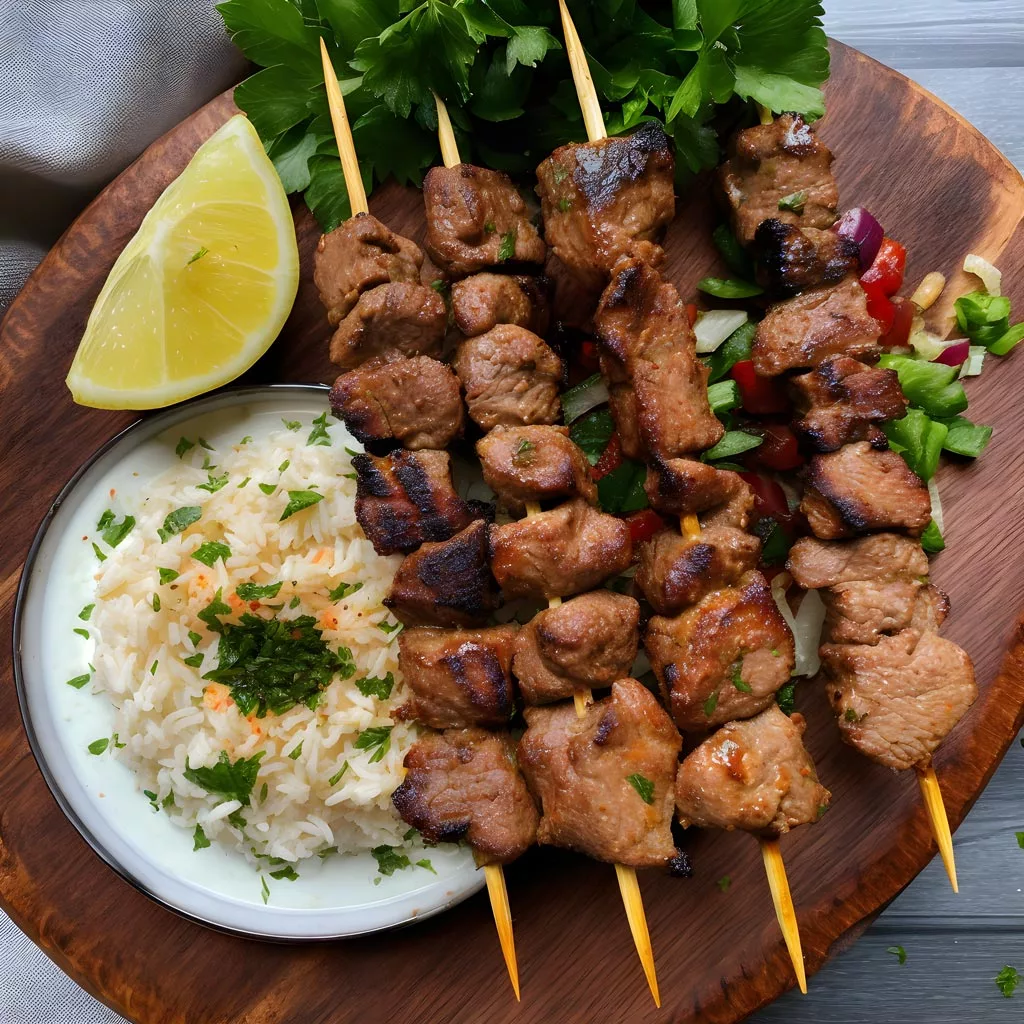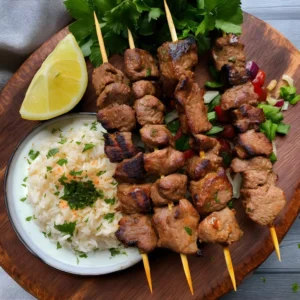
If you’re looking for a dish that’s bursting with flavor and easy to make, look no further than these succulent Lamb Shish Kebabs.
Originating from the Middle East, shish kebabs are skewered and grilled meats that are loved for their simplicity and taste. Don’t let the exotic name fool you; these kebabs are simple enough for even the most novice of cooks to master.
Marinated in a blend of garlic, olive oil, and spices like paprika, cumin, and coriander, these kebabs are packed with flavor that will leave your taste buds singing.
The acidity from the lemon juice helps tenderize the meat while adding a bright, zesty kick to each bite. With just a handful of ingredients, you can create a dish that’s sure to impress friends and family alike.
Grilling these kebabs infuses them with a delicious smoky flavor, making them perfect for backyard barbecues or weeknight dinners.
Whether you’re cooking for a crowd or just whipping up a quick meal for yourself, these Lamb Shish Kebabs are sure to become a staple in your recipe repertoire.
Expert Tip: To prevent the kebabs from sticking to the grill, brush them with a little olive oil before grilling and rotate them occasionally while cooking to ensure even cooking and prevent burning.
Lamb Leg: Lamb leg, cut into cubes, serves as the star of these kebabs, offering a tender and flavorful protein base.
Garlic: Minced garlic adds a pungent depth of flavor to the marinade, infusing the lamb with aromatic goodness.
Olive Oil: Olive oil not only helps to tenderize the meat but also serves as a carrier for the spices, ensuring they coat the lamb evenly.
Paprika: Paprika lends a subtle sweetness and vibrant color to the marinade, enhancing the visual appeal of the kebabs.
Cumin Powder: Cumin powder brings a warm, earthy flavor to the marinade, complementing the richness of the lamb.
Coriander Powder: Coriander powder adds a citrusy, herbal note to the marinade, balancing the other flavors beautifully.
Salt and Black Pepper: Salt and black pepper season the meat, enhancing its natural flavors and adding depth to the dish.
Lemon: Freshly squeezed lemon juice provides acidity and brightness to the marinade, tenderizing the meat and adding a refreshing zing.
Expert Tip: For added flavor, you can customize the marinade by incorporating additional herbs and spices such as oregano, thyme, or smoked paprika.
These serving suggestions ensure a well-rounded and satisfying dining experience, highlighting the flavors of the Lamb Shish Kebabs while offering complementary textures and tastes.
Expert Tip: Ensure the grill or grill pan is preheated to medium-high heat before adding the kebabs to achieve a nice sear on the meat.
Marinate the lamb for at least 2 hours, or overnight for best results. This allows the flavors to penetrate the meat and tenderize it effectively.
While lamb leg is preferred for its tenderness and flavor, you can also use lamb shoulder or loin for this recipe. Just ensure to adjust the cooking time accordingly as different cuts may require varying levels of cooking.
Yes, you can grill the kebabs indoors using a grill pan or broiler. Preheat the grill pan or broiler to medium-high heat and cook the kebabs as instructed, turning them occasionally until cooked to your preferred level of doneness.
Yes, you can marinate the lamb ahead of time and freeze it for later use. Simply place the marinated lamb in an airtight container or freezer bag and store it in the freezer for up to 3 months. Thaw in the refrigerator before grilling.
Here are some more recipes for you to enjoy! If you my recipes don’t forget to rate and leave a comment.
If you have any recipe suggestions, please do not hesitate to ask me. A great way to stay in contact with me is through Instagram, Facebook, Twitter and YouTube. Don’t forget to tag me @CookwithNabeela in your recipe photos!

Subscribe now to receive my latest recipes directly in your inbox. Stay up-to-date and never miss out!

I love to cook! I want to share with you my favourite, delicious family-friendly recipes. I want to inspire you to create fantastic food for your family every day.
Add your first comment to this post